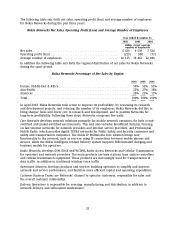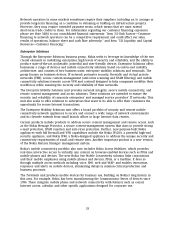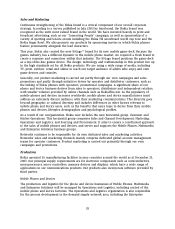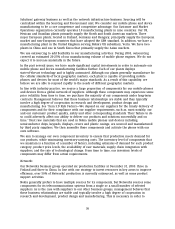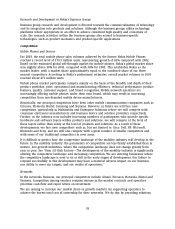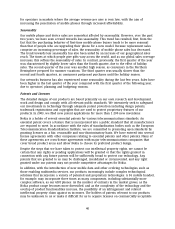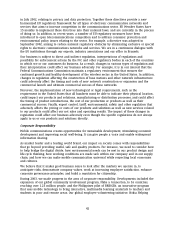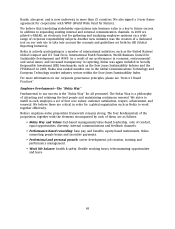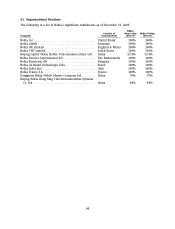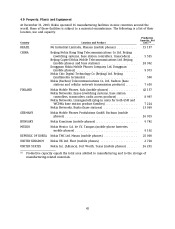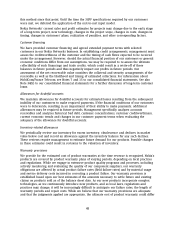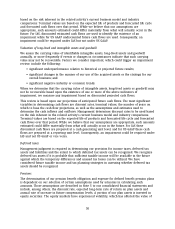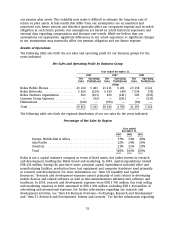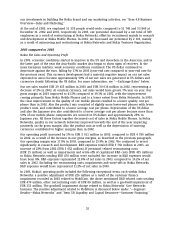Nokia 2003 Annual Report Download - page 43
Download and view the complete annual report
Please find page 43 of the 2003 Nokia annual report below. You can navigate through the pages in the report by either clicking on the pages listed below, or by using the keyword search tool below to find specific information within the annual report.in July 2002, relating to privacy and data protection. Together these directives provide a new
harmonized EU regulatory framework for all types of electronic communication networks and
services that aims to increase competition in the communications sector. EU Member States have
15 months to implement these directives into their national laws, and are currently in the process
of doing so. In addition, in recent years, a number of EU regulatory measures have been
introduced to open telecommunications competition and to address consumer protection and
environmental policy issues relating to the sector. For example, a directive was adopted in
September 2002, aiming to reduce national regulatory obstacles by eliminating exclusive or special
rights to electronic communications networks and services. We are in a continuous dialogue with
the EU institutions through our experts, industry associations and our office in Brussels.
Our business is subject to direct and indirect regulation, interpretations of regulations and
possibility for enforcement actions by the FCC and other regulatory bodies in each of the countries
in which we or our customers do business. As a result, changes in various types of regulation and
their interpretation could affect our business adversely. For example, it is in our interest that the
Federal Communications Commission maintain a regulatory environment that ensures the
continued growth and healthy development of the wireless sector in the United States. In addition,
changes in regulation affecting the construction of base stations and other network infrastructure
could adversely affect the timing and costs of new network construction or expansion and the
commercial launch and ultimate commercial success of these networks.
Moreover, the implementation of new technological or legal requirements, such as the
requirement in the United States that all handsets must be able to indicate their physical location,
could impact our products and solutions, manufacturing or distribution processes, and could affect
the timing of product introductions, the cost of our production or products as well as their
commercial success. Finally, export control, tariff, environmental, safety and other regulation that
adversely affects the pricing or costs of our products and solutions as well as new services related
to our products could affect our net sales and operating results. The impact of these changes in
regulation could affect our business adversely even though the specific regulations do not always
apply to us or our products and solutions directly.
Corporate Responsibility
Mobile communications creates opportunities for sustainable development, stimulating economic
development and improving social well-being. It can give people a voice and enable widespread
information sharing.
As market leader and a leading world brand, our impact on society comes with responsibilities
that go beyond providing useful, safe and quality products. For instance, we need to consider how
to help bridge the digital divide, how environmental needs can be met in our product design and
life-cycle thinking, how working conditions are made safe within our company and in our supply
chain, and how we can make mobile communication universal while respecting local economies
and cultures.
We believe that it makes good business sense to look after the markets we operate in, to
anticipate risks, demonstrate company values, work at increasing employee satisfaction, enhance
corporate governance principles, and build a reputation for citizenship.
During 2003, we made progress in the area of corporate responsibility. Developments included the
expansion of our global community involvement program, Make a Connection, to 16 countries,
reaching over 1.25 million people, and the Philippines pilot of BRIDGEit, an innovative program
that uses mobile technology to bring interactive, multimedia learning materials to teachers and
students in poor and remote areas. Our global employee volunteering initiative, Nokia Helping
42


